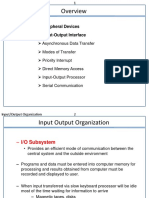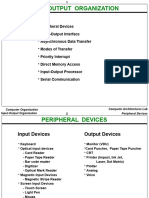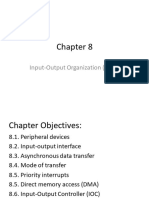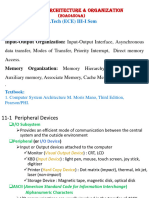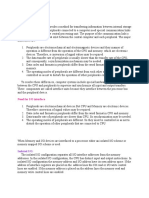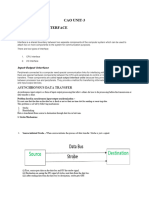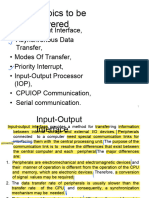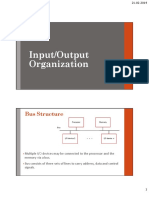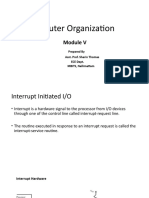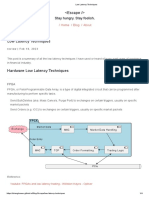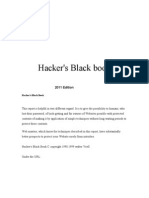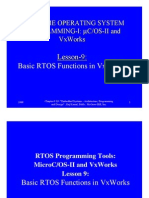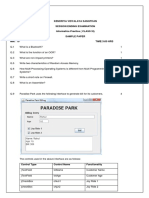0% found this document useful (0 votes)
63 views22 pages(Lec4.0) - Input Output (Part 1, Mano-Ch11)
The document covers Chapter 11 of 'Computer System Architecture' by M. Morris Mano, focusing on Input-Output Organization. It discusses peripheral devices, input-output interfaces, data transfer modes, and communication protocols including asynchronous and synchronous transfers. Key concepts include FIFO buffers, DMA, and the differences between serial and parallel communication.
Uploaded by
issac000106Copyright
© © All Rights Reserved
We take content rights seriously. If you suspect this is your content, claim it here.
Available Formats
Download as PDF, TXT or read online on Scribd
0% found this document useful (0 votes)
63 views22 pages(Lec4.0) - Input Output (Part 1, Mano-Ch11)
The document covers Chapter 11 of 'Computer System Architecture' by M. Morris Mano, focusing on Input-Output Organization. It discusses peripheral devices, input-output interfaces, data transfer modes, and communication protocols including asynchronous and synchronous transfers. Key concepts include FIFO buffers, DMA, and the differences between serial and parallel communication.
Uploaded by
issac000106Copyright
© © All Rights Reserved
We take content rights seriously. If you suspect this is your content, claim it here.
Available Formats
Download as PDF, TXT or read online on Scribd
/ 22







